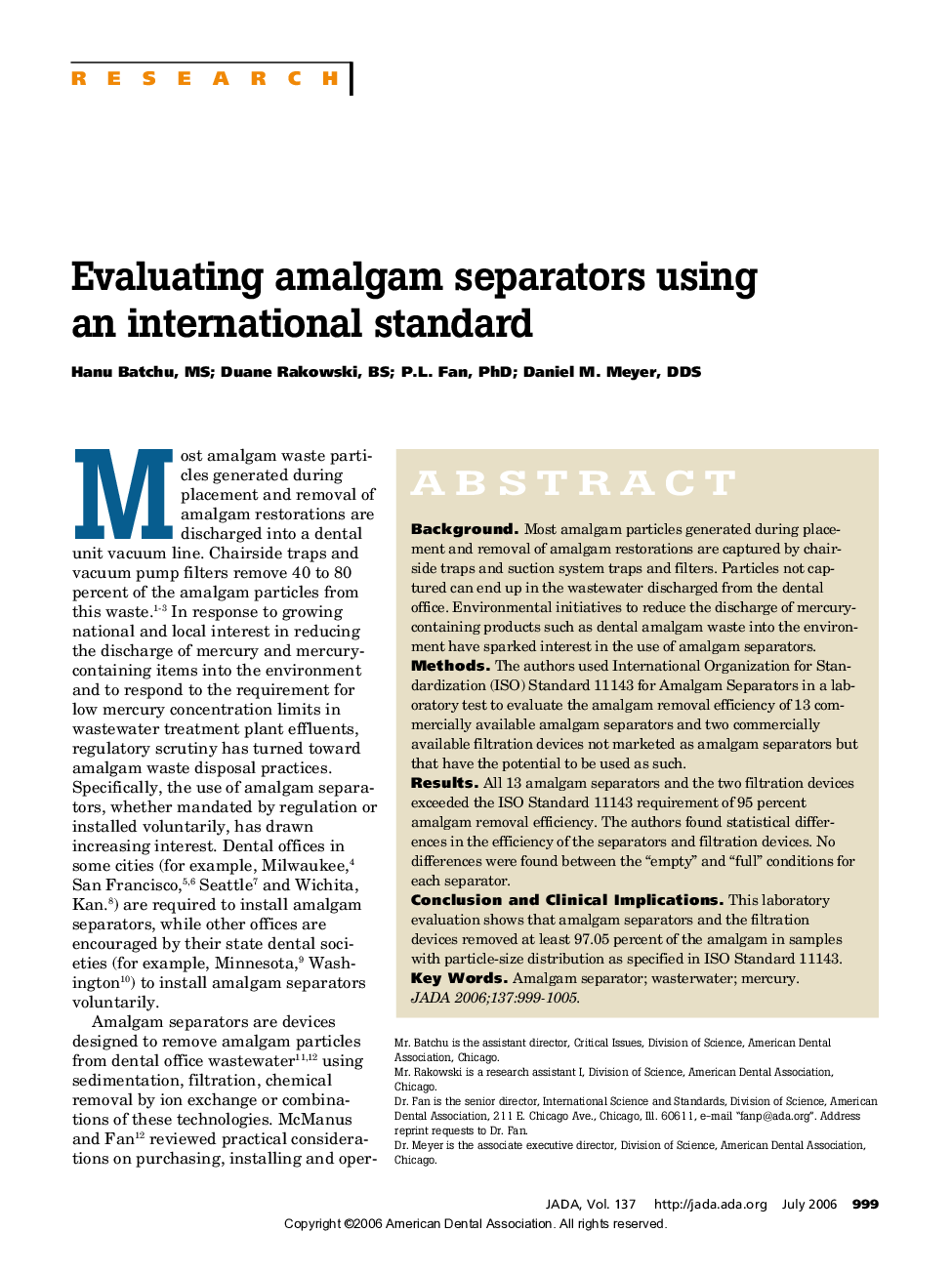| Article ID | Journal | Published Year | Pages | File Type |
|---|---|---|---|---|
| 3140159 | The Journal of the American Dental Association | 2006 | 7 Pages |
ABSTRACTBackgroundMost amalgam particles generated during placement and removal of amalgam restorations are captured by chair-side traps and suction system traps and filters. Particles not captured can end up in the wastewater discharged from the dental office. Environmental initiatives to reduce the discharge of mercury-containing products such as dental amalgam waste into the environment have sparked interest in the use of amalgam separators.MethodsThe authors used International Organization for Standardization (ISO) Standard 11143 for Amalgam Separators in a laboratory test to evaluate the amalgam removal efficiency of 13 commercially available amalgam separators and two commercially available filtration devices not marketed as amalgam separators but that have the potential to be used as such.ResultsAll 13 amalgam separators and the two filtration devices exceeded the ISO Standard 11143 requirement of 95 percent amalgam removal efficiency. The authors found statistical differences in the efficiency of the separators and filtration devices. No differences were found between the “empty” and “full” conditions for each separator.Conclusion and Clinical ImplicationsThis laboratory evaluation shows that amalgam separators and the filtration devices removed at least 97.05 percent of the amalgam in samples with particle-size distribution as specified in ISO Standard 11143.
